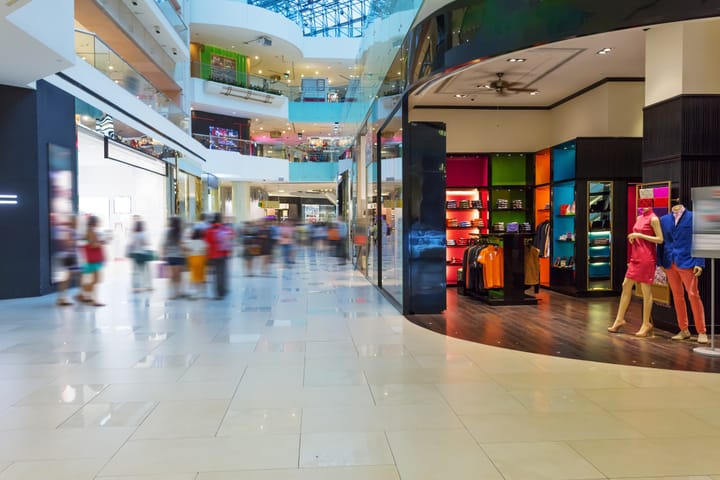Is it time to adjust your return policy?
Plus: Lord & Taylor is coming back, say less!

With Christmas two weeks away, it is crunch time in every sense of the word. There’s reason to be optimistic: According to National Retail Federation (NRF) chief economist Jack Kleinhenz, “conditions are shaping up for a successful holiday retail season” and NRF predicts that holiday sales will increase 2.5%-3.5% over last year. That’s good news, but beware of increasing post-holiday returns.
What’s in store:
• TikTok Shop Spurs $100M in Black Friday sales
• End of an era: $2.2B and more Taylor Swift stats
• How an ex-basketball player rose to Walmart EVP
• The number of social users who actually post may surprise you
• They're baaack: Lord & Taylor to become luxury discounter

Reverse gear: Consumers to return $890B of merch in 2024
Shoppers are on track to return nearly $900 billion in merchandise this year — about 17% of total sales — according to a new study from the National Retail Federation and Happy Returns. While most people look for free returns before deciding on an online purchase, two-thirds of retailers have started charging customers for returns, while some retailers like REI have begun to ban serial returners. Reverse logistics are expensive, as are warehouse rent and labor costs, so more consumers have to pay the price in order to play the returns game. And more retailers consider fraud and policy abuse prevention as part of their SOP.
Why this matters: Returns are a given, and retailers have to innovate in order to mitigate them, as well as to streamline reverse logistics and prevent fraud, all while keeping the customer happy. Instant refunds and convenient in-person returns locations are now table stakes. (Yahoo Finance)
Apartments are the new anchor stores: Living at the mall

While new retail centers are being architected with residential components built in, older ones, like the country’s first “mall” in Providence, RI, are retrofitting empty stores into micro apartments. While a Kirsten Dirksen video about these tiny homes went viral on YouTube nine years ago, CNBC reporter Gabrielle Fonrouge takes another look at residences and retailers who are coexisting in the historic building, as well as the national trend and what that looks like in other cities.
Why this matters: The real estate-meets-retail trend could solve two problems at once: the housing shortage and the decline of the mall. Retailers could cater to a built-in audience, an M.O. that used to be reserved just for hotel boutiques. Shopkeepers could also take advantage of favorable lease terms in shopping centers seeking to lure back retail tenants. (CNBC)

Influencers sold $100M with TikTok Shop on Black Friday
What tariffs? Off-price retailers not as worried
More retail jobs added in November, unemployment steady
✨Are you ready for it? Taylor Swift’s Eras tour numbers
Lord & Taylor to be relaunched online as luxury discounter

Walmart EVP shares rise from basketball to boardroom
Ever wonder what sports and retail have in common? Turns out, the teamwork analogies are endless. No one knows that better than Cedric Clark, EVP of Store Operations at Walmart, who was a professional basketball player overseas before 9/11 halted his career on the court. To make ends meet, he started working as a sporting goods associate in a Washington state Walmart and a year later, he decided to trade sports for retail permanently. Clark shares how working in asset protection gave him a big-picture view of the retailer, how Walmart founder Sam Walton’s belief that the best ideas come from associates shaped his leadership style, and that inventory accuracy and availability are associates’ most common issues.
“Listening is a huge framework for me. No matter what level of associate or his/her role, when I meet with them I’ll always ask them, ‘What am I not seeing?’ And their suggestions, some of them the most simple things, can make such a big deal for their life and, ultimately, make things better for the customer.” - Cedric Clark, Walmart
Why this matters: An associate-first mindset leads to customer-first practices, which ultimately equals success. Empowering associates by valuing their insights not only boosts morale but drives innovative solutions that benefit the entire business.
Read Clark’s Q&A in Retail Touchpoints

Not as many social media users post as you think
Before you go all in on social media, remember that it’s more like a focus group than a nationwide poll. And even nationwide polls don’t always tell the whole story. Algorithms drive click-bait, which perpetuates more click-bait, while the most relevant, i.e., useful stories often fall by the wayside. As content and social media manager Andrew Hutchinson points out, only 20% of all X users create all the content. The rest of users are silent scrollers, rarely posting, liking or commenting on said content.
Why this matters: While social media stats often make headlines, it’s important to realize the media’s role in what gets reported and why. Clicks and engagement may be important for keeping the lights on at media publications, but they aren’t the end-all-be-all for retailers. They can be extremely useful marketing tools when analyzed in context. (Social Media Today)



What we’re gifting:
If you know, you know. The Customer Is Always Wrong: An Unhinged Guide to Everything That Sucks About Work (From an Angry Retail Guy) by comedian Scott Seiss is the perfect gift for any retail, service or office worker in your life. His TikTok is hilarious, btw.
Who we’re following:
Is EGC a thing? That would be employee-generated content from Coach store associate Brandon Nguyen, aka @branbran1997, on TikTok. As one follower put it, “You single-handedly brought Coach back in fashion.”
What we’re listening to:
Remember when Target was the ne plus ultra of cheap chic? What happened? WSJ's Sarah Nassauer examines why the popular big-box store’s sales have slid and what it may be doing to get back on track in this recent episode of The Journal podcast.
Thanks for reading this week's edition!
You can reach the newsletter team at theskupe@mynewsletter.co. We enjoy hearing from you.
Interested in advertising? Email us at newslettersales@mvfglobal.com
Was this email forwarded to you? Sign up here to get this newsletter weekly.
The SKUpe is curated and written by Marcy Medina and edited by Bianca Prieto





Comments ()